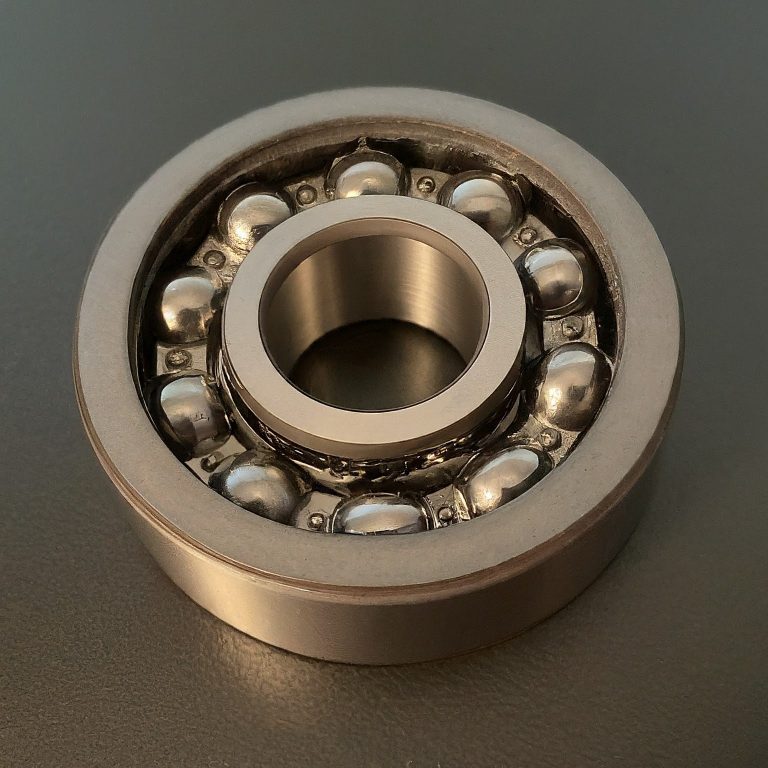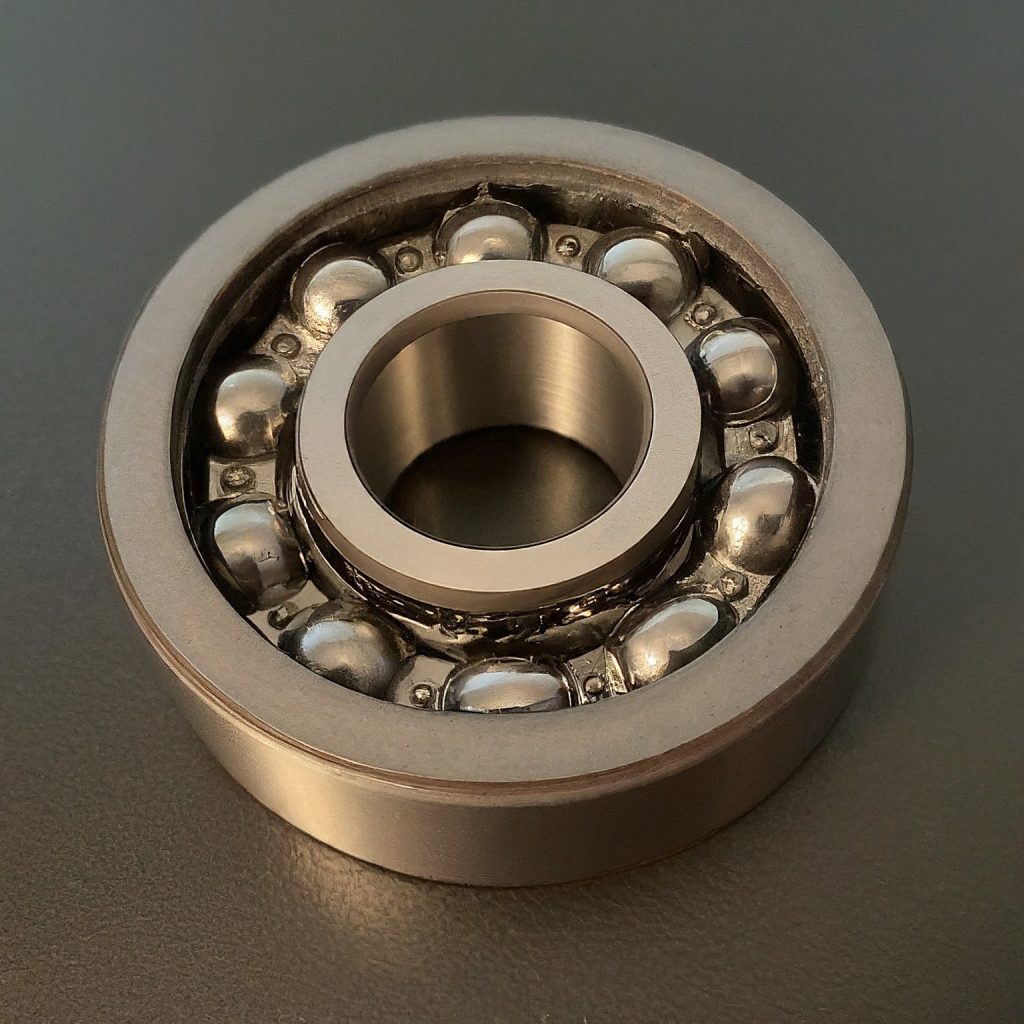
Table of Contents
Introduction to Ball Bearings
Ball bearings are essential components in modern machinery, playing a critical role in reducing friction between moving parts and ensuring smooth operation. But what exactly are ball bearings, and why are they so important?
What are Ball Bearings?
Ball bearings are mechanical devices that facilitate motion by reducing friction between two rotating or moving parts. They consist of small spherical balls sandwiched between two smooth surfaces called races.
Importance of Ball Bearings in Modern Machinery
Without ball bearings, many of the machines and devices we rely on daily, from cars to kitchen appliances, would not function as efficiently. They are fundamental in improving performance, increasing durability, and reducing energy consumption.
History of Ball Bearings
Early Beginnings
The concept of ball bearings dates back to ancient civilizations, with evidence suggesting their use in Roman and Egyptian engineering. However, it wasn’t until the Renaissance that significant advancements were made.
Evolution Through the Ages
Leonardo da Vinci is often credited with the first practical designs of ball bearings, and by the 19th century, they had become integral to the industrial revolution, revolutionizing machinery and transportation.
Components of a Ball Bearing
Inner and Outer Races
The races are the smooth surfaces that encase the balls. The inner race is attached to the rotating shaft, while the outer race is fixed to the housing.
Balls
The balls are the rolling elements that reduce friction by minimizing contact between the races. They are typically made of steel, ceramic, or other durable materials.
Cage
The cage, or retainer, holds the balls in place, ensuring they are evenly spaced and allowing them to move freely.
Types of Ball Bearings
Deep Groove Ball Bearings
These are the most common type of ball bearings, known for their versatility and ability to handle radial and axial loads.
Angular Contact Ball Bearings
Designed to handle higher axial loads, angular contact bearings are used in applications where precision is crucial, such as in machine tools.
Self-Aligning Ball Bearings
These bearings can correct minor misalignments, making them ideal for applications where shaft deflection or mounting errors occur.
Thrust Ball Bearings
Thrust ball bearings are designed to handle axial loads exclusively, often used in low-speed applications like automotive steering mechanisms.
How Ball Bearings Work
Basic Principles
Ball bearings work on the principle of rolling friction, which is significantly less than sliding friction. The balls roll between the races, reducing the effort needed to move or rotate parts.
Load Distribution
The load on a ball bearing is distributed across the balls, minimizing stress on individual balls and ensuring even wear and tear.
Applications of Ball Bearings
Automotive Industry
Ball bearings are used in various automotive components, including wheels, transmissions, and engines, ensuring smooth and efficient operation.
Aerospace Industry
In the aerospace sector, ball bearings are crucial for the performance and safety of aircraft engines, landing gears, and control surfaces.
Industrial Machinery
From conveyor belts to robotics, ball bearings are vital in maintaining the efficiency and longevity of industrial equipment.
Household Appliances
Many household appliances, such as washing machines, refrigerators, and fans, rely on ball bearings for quiet and efficient operation.
Advantages of Using Ball Bearings
Reduced Friction
Ball bearings significantly reduce friction, which translates to less wear and tear on components and lower energy consumption.
High Load Capacity
Despite their small size, ball bearings can support substantial loads, making them suitable for heavy-duty applications.
Durability
With proper maintenance, ball bearings can last for many years, providing reliable performance and reducing the need for frequent replacements.
Common Issues with Ball Bearings
Wear and Tear
Over time, ball bearings can wear out due to constant use, leading to increased friction and potential failure.
Contamination
Dirt, dust, and other contaminants can enter the bearing, causing damage and reducing efficiency.
Misalignment
Improper installation or operation can lead to misalignment, increasing stress on the bearings and shortening their lifespan.
Maintenance and Care of Ball Bearings
Regular Inspections
Frequent inspections can help identify issues early, preventing catastrophic failures and extending the lifespan of the bearings.
Proper Lubrication
Using the right lubricant and applying it correctly can minimize friction and wear, ensuring smooth operation.
Cleaning Techniques
Regular cleaning can remove contaminants and prevent damage, especially in harsh or dirty environments.
Selecting the Right Ball Bearing
Load Requirements
Consider the type and magnitude of loads the bearing will need to support to ensure optimal performance.
Speed Ratings
Different bearings are rated for different speeds. Selecting the right one can prevent overheating and premature failure.
Environmental Conditions
Factors like temperature, humidity, and exposure to chemicals should influence your choice of ball bearings.
Innovations in Ball Bearings
Ceramic Ball Bearings
Ceramic bearings offer superior performance, with higher speed capabilities and better resistance to heat and corrosion.
Hybrid Ball Bearings
Combining ceramic balls with steel races, hybrid bearings provide a balance of performance and cost-effectiveness.
Cost Considerations
Price vs. Performance
While higher-quality bearings may have a higher upfront cost, they often provide better performance and longer lifespans.
Long-term Savings
Investing in quality bearings can save money in the long run by reducing maintenance costs and downtime.
Environmental Impact
Sustainable Manufacturing
Many manufacturers are adopting sustainable practices to reduce the environmental footprint of ball bearing production.
Recycling and Disposal
Proper recycling and disposal of ball bearings can minimize environmental impact and promote sustainability.
Future of Ball Bearings
Technological Advances
Ongoing research and development are leading to new materials and designs that enhance the performance and durability of ball bearings.
Market Trends
The demand for high-performance, energy-efficient bearings is driving innovation and growth in the ball bearing market.
Conclusion
Ball bearings are indispensable components in countless applications, from everyday household items to advanced industrial machinery. Understanding their types, components, and maintenance requirements can help you select the right bearings for your needs and ensure they perform optimally for years to come.
FAQs
What are the most common types of ball bearings?
The most common types include deep groove, angular contact, self-aligning, and thrust ball bearings.
How do I know if my ball bearing needs replacement?
Signs of a failing ball bearing include unusual noises, increased friction, and visible damage or wear.
Can ball bearings be reused?
While some bearings can be cleaned and reused, it’s often best to replace them to ensure optimal performance.
What materials are ball bearings made of?
Ball bearings are typically made from steel, ceramic, or a combination of both (hybrid bearings).
How does lubrication affect ball bearing performance?
Proper lubrication reduces friction, prevents wear, and extends the lifespan of ball bearings


Hey people!!!!!
Good mood and good luck to everyone!!!!!